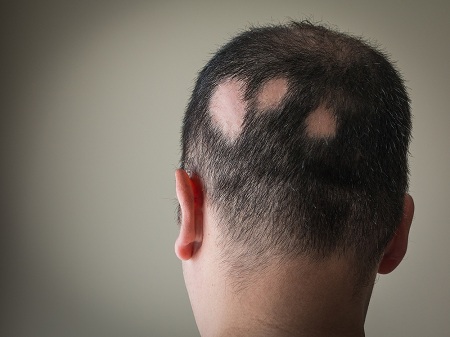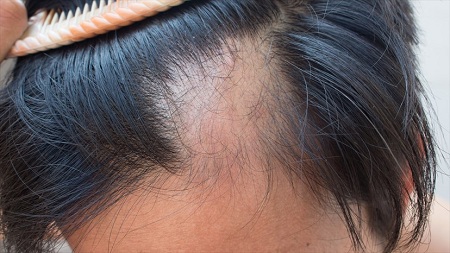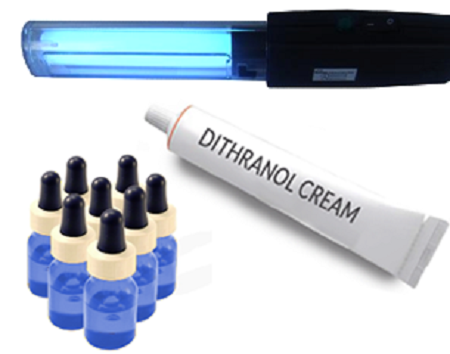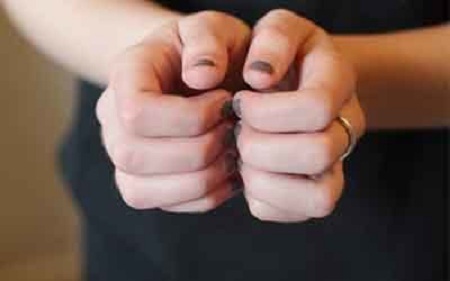Seeing Some Bald Patches Around Your Head? Find Out The Reason And It's Remedy Here

Alopecia Areata is an acquired disease that affects all hair-bearing skin; characterized by localized areas of hair loss. The condition is sometimes related to other medical problems still, in some cases, the bald areas regrow hair spontaneously.
Alopecia Areata is an acquired disease that affects all hair-bearing skin; characterized by specific areas of hair loss.
The condition is sometimes related to other medical problems still, in some cases, the bald areas regrow hair spontaneously.
It is a common autoimmune disease that results in few bald spots on the scalp roughly affecting 6.8 million people in the United States.
What Is Alopecia Areata?
The term is usually used when a person suffers from an unpredictable hair loss.
In some cases, the condition can be more extreme affecting the entire body (alopecia universalis) whereas in most cases it can lead to the complete hair loss on the scalp.

The disorder affects people of all ages and gender, however, reports suggest that it mostly occur before the age of 30.
The condition is occasionally associated with some other autoimmune conditions like vitiligo, lupus, ulcerative colitis, and rheumatoid arthritis.
Sometimes, alopecia areata occurs within family members suggesting a role of genes.
Facts About Alopecia Areata
- One out of five people with the issue has a family member suffering from the same condition.
- Alopecia areata often develops suddenly over the course of a few days.
- Some people have only a few patches and experience a spontaneous full recovery without any treatment.
- There's no cure for alopecia areata.
What Causes Alopecia Areata?
As stated above, it is an autoimmune disease when the immune system mistakenly affects healthy cells.
If you have alopecia areata, your immune system mistakenly attacks your hair follicles. It is the structure from which hairs grow.

The hair follicles become smaller and stop hair production, leading to hair loss.
Researchers, however, are still unknown what triggers the immune system to attack the hair follicles. Hence, the exact condition of the cause is still unknown.
Signs And Symptoms
Here is the list of signs and symptoms associated with Alopecia Areata:
- Hair loss is very common and affects most people in their lives.
- Androgenetic hair loss is seen in both men and women but the condition is more dramatic in men.
- Thyroid disease, anemia, and protein deficiency may also cause hair loss.
- A more generalized form of hair loss is referred to as diffuse alopecia areata.
- The appearance of pinpoint dents
- White spots and lines may appear
- Nails become rough and often lose their shine
Diagnosis And Treatment
Firstly, your doctor will review your symptoms to determine if you have alopecia areata.
They may be able to determine alopecia areata by simply looking at the extent of hair loss in the localized area and examining a few hair samples under a microscope.

The physician may also perform a scalp biopsy to detect whether the condition is due to alopecia areata or due to fungal infections like tinea capitis.
If some other autoimmune condition is suspected, blood tests might be an option.
As already stated, there's no cure for alopecia areata, still, the condition is treatable. Here are some of the treatment options:
1. Medical Treatment
Your doctor may suggest certain medications like minoxidil (Rogaine) into the scalp to stimulate hair growth.
Some other procedures like steroid injections, corticosteroid creams and ointments can be used.
In some cases, photochemotherapy may be used to promote hair growth.
2. Alternative Therapies
Some people try alternative therapies to treat their condition.
Some common therapies may include:
- aromatherapy
- acupuncture
- herbal treatment and
- vitamin supplement
As the alternative therapies haven't been tested in clinical trials, the effectiveness of such mechanism isn't known.
Treatment of Alopecia Through Yoga
Yoga, pranayama and proper diet, one can prevent hair loss. All these procedures help in eliminating stress hence reducing the chances of hair loss.
Yoga rejuvenates the whole body and also promotes blood circulation to specific parts of the body like scalp.
Rubbing your fingernails can stimulate the blood circulation in your scalp. This activated blood flow to the scalp helps in strengthening the hair follicles.

Source: Yoga Vidya International
Some yoga techniques not only prevent hair fall but it also aids in the growth of new hair in the affected areas.
Below you can learn how to properly do the yoga.
We can also follow some steps to minimize discomfort like applying sunscreen on the exposed areas to protect the skin from direct sun rays; wearing sunglasses, hat, wig or scarf can also be an option.
